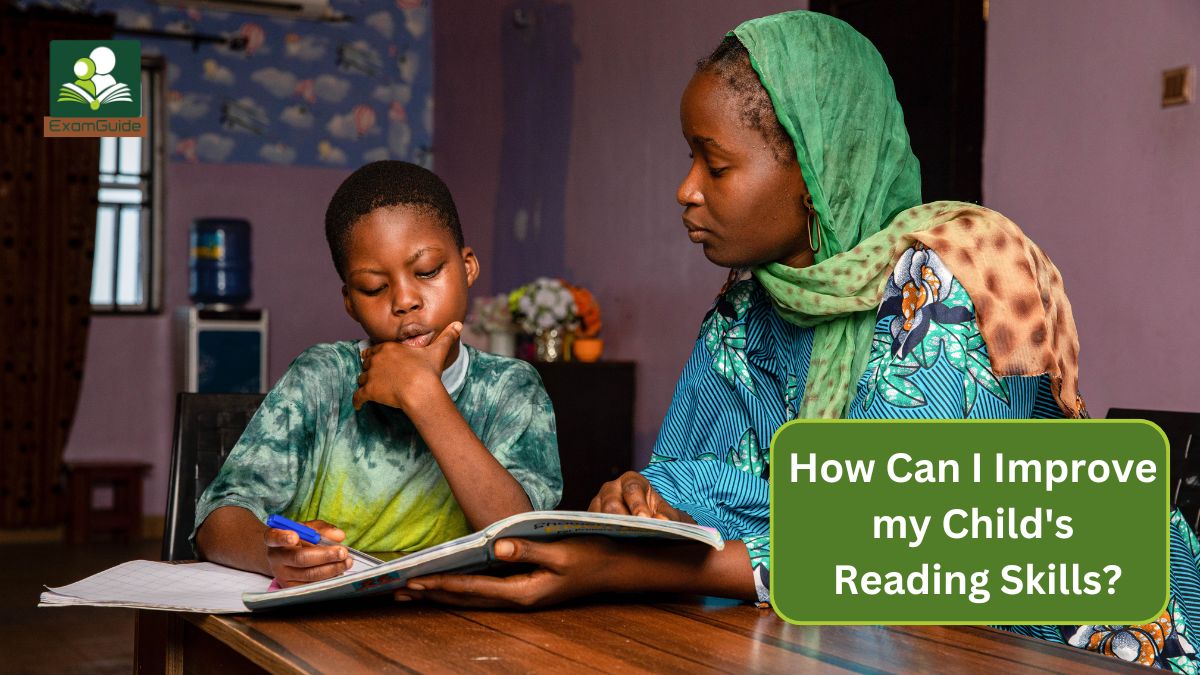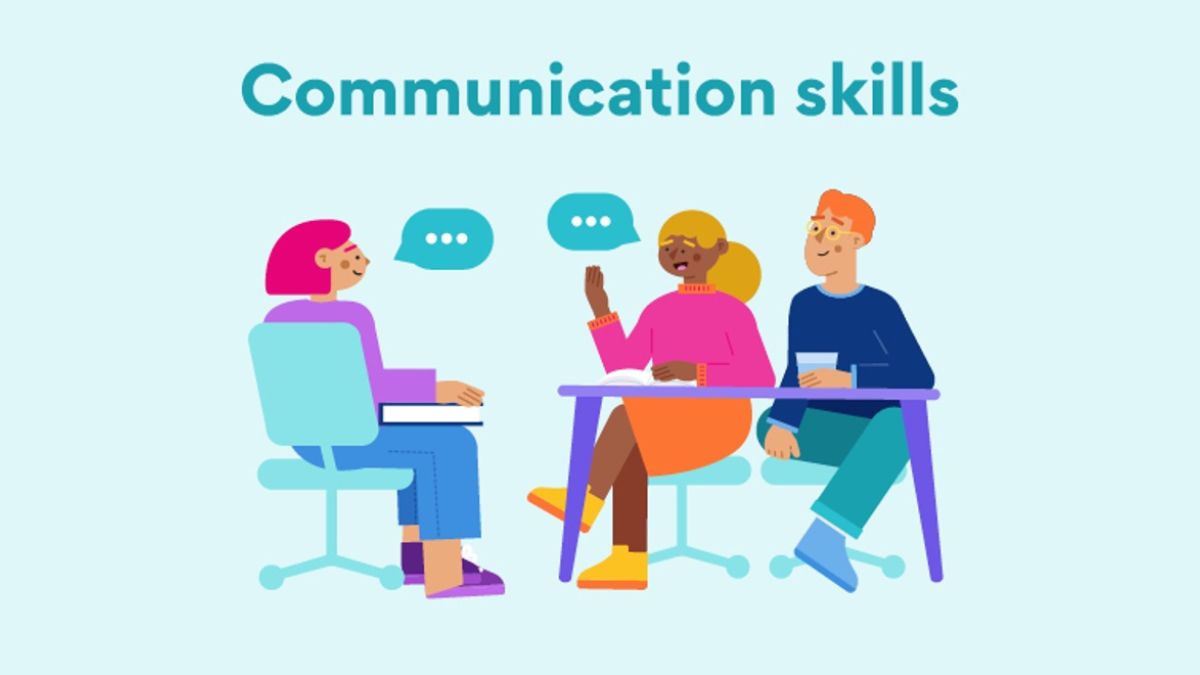
How Can I Improve my Child's Reading Skills?
Reading is a foundational skill that plays a crucial role in a child's overall academic and cognitive development. As a parent, you have a significant influence on how well your child learns to read and how much they enjoy it.
Whether your child is just starting to recognize letters or is struggling with more complex texts, there are several effective strategies you can employ to enhance their reading skills.
Let’s get right into it.
Table of Content
Why is it important to improve my child's reading skills?
What are Some Effective Ways to Improve my Child's Reading Skills?
How Much Time Should my Child Spend Reading Each Day?
What Should I do if my Child Struggles With Reading?
How can I Make Reading Fun for my Child?
At What Age Should I Start Focusing on Improving my Child's Reading Skills?
Can Watching TV or Playing Video Games affect my Child's Reading Skills?
How Can I Track my Child's Reading Progress?
What Types of Books are Best for Improving my Child's Reading Skills?
What Types of Books are Best for Improving my Child's Reading Skills?
How Can I Encourage my Child to Read More if they are Not Interested?
Why is it important to improve my child's reading skills?
Improving your child's reading skills is crucial because it forms the cornerstone of their overall education and personal development. Reading is not just about decoding words on a page; it's about understanding, interpreting, and engaging with information.
Here are some key reasons why enhancing your child's reading skills is important:
- Academic Success: Reading is fundamental to learning across all subjects. Whether it's understanding math problems, following science experiments, or comprehending historical events, strong reading skills are essential for academic achievement. Children who read well are more likely to excel in school.
- Critical Thinking and Problem-Solving: Reading helps children develop critical thinking and problem-solving skills. As they read, they learn to analyze information, draw conclusions, and make connections between different ideas, which are vital abilities in both academic settings and everyday life.
- Language Development: Reading exposes children to new vocabulary, sentence structures, and concepts, which enhances their language skills. This exposure is crucial for their ability to communicate effectively, both in writing and speaking.
- Empathy and Understanding: Through reading, children are introduced to different cultures, perspectives, and experiences. This broadens their understanding of the world and fosters empathy by allowing them to see life from someone else's point of view.
- Independence and Confidence: As children become more proficient readers, they gain the ability to learn independently. This independence boosts their confidence, as they realize they can acquire knowledge on their own and tackle new challenges.
- Lifelong Learning: Strong reading skills instil a love for learning that can last a lifetime. Children who enjoy reading are more likely to continue learning outside of formal education, exploring new interests and staying informed about the world around them.
- Cognitive Development: Reading stimulates cognitive development by enhancing memory, attention span, and concentration. It also encourages imaginative thinking and creativity, which are important for personal growth and innovation.
- Practical Life Skills: Beyond academics, reading is essential for navigating daily life. From following instructions and reading signs to understanding contracts and managing finances, the ability to read well is crucial for functioning in society.
What are Some Effective Ways to Improve my Child's Reading Skills?
1. Create a Reading-Friendly Environment
- Surround Them with Books: Fill your home with a variety of books that cater to your child’s interests and reading level. A well-stocked bookshelf encourages children to pick up a book and start reading.
- Designate a Reading Space: Create a cozy, quiet corner in your home where your child can read without distractions. Comfortable seating and good lighting can make reading more enjoyable.
- Set an Example: Children often emulate their parents' behaviours. If they see you reading regularly, they’re more likely to develop a reading habit themselves.
2. Establish a Routine
- Daily Reading Time: Dedicate a specific time each day for reading. This could be part of the bedtime routine or a quiet afternoon activity. Consistency helps children develop a habit and look forward to reading.
- Read Together: Reading aloud to your child can significantly boost their vocabulary and comprehension skills. It also provides an opportunity for bonding and discussing the stories you read.
- Incorporate Reading into Daily Activities: Encourage your child to read everyday items like grocery lists, recipes, or signs during outings. This helps them understand that reading is a useful skill in daily life.
3. Choose the Right Books
- Match Books to Their Reading Level: Select books that are neither too easy nor too challenging. Books that are too difficult can frustrate your child, while books that are too easy might not hold their interest.
- Explore Different Genres: Introduce your child to various types of books—fiction, non-fiction, poetry, comics, and more. This variety keeps reading exciting and helps them discover what they enjoy most.
- Let Them Choose: Allowing your child to pick their own books can increase their motivation to read. Visit libraries or bookstores together and let them choose what catches their interest.
4. Develop Phonics and Vocabulary
- Phonics Practice: Phonics is the relationship between letters and sounds. Practice phonics regularly using flashcards, educational apps, or simple word games. Understanding phonics is critical for decoding new words.
- Build Vocabulary: Introduce new words during reading sessions and in everyday conversations. Discuss their meanings and use them in sentences. A robust vocabulary helps with comprehension and expression.
- Encourage Word Games: Engage your child in word games like Scrabble, Boggle, or crossword puzzles. These activities make learning new words fun and interactive.
5. Enhance Comprehension Skills
- Ask Questions While Reading: Pause during reading to ask your child questions about the story. What do they think will happen next? Why did a character act in a certain way? This helps develop critical thinking and ensures they understand the text.
- Summarize the Story: After reading, ask your child to summarize the story in their own words. This reinforces comprehension and helps them retain information.
- Discuss Themes and Messages: Talk about the themes or moral lessons in the story. Relating these to real-life situations can make reading more meaningful and memorable.
6. Encourage Writing
- Keep a Reading Journal: Encourage your child to keep a journal where they write about the books they read. They can jot down new words, draw pictures of their favourite scenes, or summarize the story.
- Creative Writing: Prompt your child to write their own stories or poems. This not only improves their writing skills but also enhances their understanding of narrative structures and vocabulary.
- Word Challenges: Give your child a list of new words and ask them to use each in a sentence or a short story. This reinforces their vocabulary and shows them how to use words contextually.
7. Utilize Technology Wisely
- Educational Apps: There are many apps designed to improve reading skills through interactive games and activities. Choose apps that are age-appropriate and educational.
- Audiobooks: Audiobooks can be a great way to enhance listening skills and introduce children to new vocabulary and complex sentence structures. Listening to a story while following along in the book can also improve reading fluency.
- E-Books: E-books often come with features like word highlights and dictionaries that can aid in reading and comprehension. They can be particularly engaging for tech-savvy kids.
8. Stay Patient and Positive
- Celebrate Progress: Acknowledge and celebrate even the smallest improvements in your child’s reading skills. Positive reinforcement can boost their confidence and motivation.
- Be Patient: Learning to read is a gradual process, and each child progresses at their own pace. Avoid comparing your child’s progress to others and focus on their individual achievements.
- Encourage a Growth Mindset: Teach your child that reading, like any other skill, improves with practice. Encourage them to keep trying, even when they encounter difficult words or texts.
How Much Time Should my Child Spend Reading Each Day?
The amount of time your child should spend reading each day can vary depending on their age, reading level, and other factors. However, here are some general guidelines to help you establish a daily reading routine:
1. Toddlers (Ages 1-3)
- Time: 10-15 minutes per day
- Why: At this stage, reading is more about exposure to language and building a love for books. Short, interactive reading sessions are ideal.
2. Preschoolers (Ages 3-5)
- Time: 15-20 minutes per day
- Why: Reading time helps develop vocabulary, listening skills, and an early understanding of narrative structures. At this age, children enjoy being read to, and incorporating picture books can be very engaging.
3. Early Elementary (Ages 6-8)
- Time: 20-30 minutes per day
- Why: This is a critical period for developing reading fluency. Regular practice helps children build confidence, comprehension, and a love for independent reading.
4. Upper Elementary (Ages 9-11)
- Time: 30-45 minutes per day
- Why: As children progress, they encounter more complex texts. This amount of reading time allows them to improve comprehension, critical thinking, and vocabulary while enjoying a range of genres.
5. Middle School (Ages 12-14)
- Time: 45-60 minutes per day
- Why: At this age, reading supports academic success and helps students explore interests and ideas. They should be encouraged to read both for school and personal enjoyment.
6. High School (Ages 15-18)
- Time: 60 minutes or more per day
- Why: High school students should read daily to prepare for advanced studies and standardized tests, while also cultivating a habit of lifelong learning. This can include a mix of assigned reading, personal reading, and online articles or resources.
Additional Tips:
- Quality Over Quantity: It’s not just about the amount of time but also the quality of the reading experience. Encourage active engagement with the text, such as discussing the story or asking questions.
- Incorporate Reading into Daily Routines: Try to include reading as a natural part of the day—before bedtime, during quiet time, or while waiting for an appointment.
- Be Flexible: If your child is deeply engaged in a book, allow them to read longer. On busier days, even a short reading session is beneficial.
What Should I do if my Child Struggles With Reading?
If your child struggles with reading, it’s important to approach the situation with patience and a strategy tailored to their needs. Here are some steps you can take to support them:
1. Identify the Specific Challenges
- Observe: Pay attention to where your child is having difficulty. Is it with recognizing words, understanding what they read, or staying focused?
- Communicate: Talk with your child to understand how they feel about reading and what they find challenging.
2. Work with Their Teacher
- Collaborate: Discuss your child’s reading challenges with their teacher. They can provide insights, suggest strategies, and offer additional support in the classroom.
- Access Resources: The teacher may recommend resources, such as reading specialists or tutoring programs, that can offer targeted assistance.
3. Create a Supportive Reading Environment
- Set a Routine: Establish a daily reading time in a quiet, comfortable space free from distractions.
- Be Patient and Encouraging: Offer praise for effort rather than just results, and avoid showing frustration when they struggle.
4. Use Multi-Sensory Learning Techniques
- Incorporate Visual Aids: Use picture books, flashcards, or illustrated stories to help connect words with images.
- Engage in Phonics Games: Phonics games and apps can make learning letter sounds and word recognition more engaging.
- Read Aloud Together: Take turns reading aloud. This helps your child hear fluent reading and practice their own skills.
5. Choose Appropriate Reading Material
- Find the Right Level: Select books that match your child’s reading level—challenging enough to promote growth but not so difficult that they become discouraged.
- Incorporate Their Interests: Choose books that align with your child’s hobbies or interests to make reading more enjoyable.
6. Break Reading into Manageable Chunks
- Short Sessions: If your child finds reading overwhelming, start with short reading sessions and gradually increase the duration as they build confidence.
- Use Reading Breaks: Allow them to take breaks between sections or pages to prevent frustration and maintain focus.
7. Consider Professional Help
- Reading Specialists: If your child’s struggles persist, a reading specialist can provide targeted interventions to address specific difficulties.
- Assess for Learning Disabilities: In some cases, challenges with reading may be linked to a learning disability, such as dyslexia. Early diagnosis and support can significantly improve outcomes.
8. Encourage a Growth Mindset
- Promote Perseverance: Help your child understand that reading is a skill that improves with practice and effort.
- Celebrate Progress: Acknowledge small victories and improvements to keep them motivated.
9. Use Technology and Tools
- Audiobooks: Listening to audiobooks can help your child enjoy stories and improve comprehension while reducing the pressure to decode every word.
- Reading Apps: There are many apps designed to help children with reading through interactive and engaging methods.
10. Stay Involved
- Read Together Regularly: Continue reading with your child, even as they improve. Discuss the stories and encourage them to ask questions.
- Monitor Progress: Keep track of your child’s reading development and adjust your approach as needed.
How can I Make Reading Fun for my Child?
To make reading fun for your child, choose books that interest them, create a cozy reading space, and make the activity interactive by asking questions and using different voices. You can also incorporate technology like e-books and educational apps, set up reading challenges with rewards, and involve the whole family in reading time.
Connecting reading to real-life activities, like cooking from a recipe or visiting a museum related to a book, can also make the experience more enjoyable.
At What Age Should I Start Focusing on Improving my Child's Reading Skills?
You can start focusing on improving your child's reading skills as early as infancy by reading to them regularly. However, more structured reading activities and skill development typically begin around the age of 3 to 4 when children start recognizing letters and sounds.
Early exposure to books and stories helps build a strong foundation, making it easier for them to develop reading skills as they grow.
Can Watching TV or Playing Video Games affect my Child's Reading Skills?
Yes, excessive watching of TV or playing video games can affect your child's reading skills. Spending too much time on screens can reduce the time available for reading and may also impact their attention span and concentration.
However, if used in moderation, certain educational programs or games can complement reading by introducing new vocabulary and concepts. It's important to balance screen time with reading and other activities that promote literacy.
How Can I Track my Child's Reading Progress?
To track your child's reading progress, you can:
- Set Reading Goals: Establish clear, achievable reading goals based on their age and skill level, such as the number of books or pages to read weekly.
- Use Reading Logs: Keep a reading log where your child records the titles, authors, and pages read each day. This helps monitor consistency and progress.
- Monitor Comprehension: Ask your child questions about what they've read to assess their understanding and retention of the material.
- Assess Fluency: Regularly listen to your child read aloud. Pay attention to their speed, accuracy, and expression to gauge improvements in fluency.
- Leverage School Reports: Use assessments from teachers and school reports to get a professional perspective on your child’s reading level and progress.
- Review Milestones: Compare your child’s progress against developmental reading milestones for their age group.
- Celebrate Achievements: Acknowledge and reward your child’s progress to encourage continued growth and enthusiasm for reading.
What Types of Books are Best for Improving my Child's Reading Skills?
When selecting books to improve your child's reading skills, it’s important to choose materials that align with their developmental stage, interests, and reading level. Here are various types of books that can effectively support and enhance your child’s reading skills:
- Picture Books
- Purpose: Picture books are ideal for younger children or early readers. They help with vocabulary development, comprehension, and understanding of story structure through engaging illustrations.
- Examples: Books like "Where the Wild Things Are" by Maurice Sendak and "The Very Hungry Caterpillar" by Eric Carle offer rich visual storytelling and simple text that captures young readers' attention. Additionally, "Masai and I" by Virginia Kroll introduces children to African culture through vivid illustrations and an engaging story.
- Early Readers
- Purpose: Designed for children who are beginning to read on their own, early reader books feature simple sentences, repetitive text, and high-frequency words.
- Examples: Series like "Bob Books" by Bobby Lynn Maslen and "Elephant and Piggie" by Mo Willems are great for building confidence and fluency in early readers. Also, "Buhle the Calabash" by Wendy Maartens is an excellent African early reader book that incorporates simple language and cultural references.
- Chapter Books
- Purpose: For children who are ready for longer stories, chapter books provide a more complex narrative structure and help develop reading stamina and comprehension.
- Examples: Books such as "Charlotte's Web" by E.B. White and "Magic Tree House" series by Mary Pope Osborne offer engaging plots with manageable chapters. An African example would be "The No. 1 Car Spotter" by Atinuke, which tells the story of a resourceful boy in a small African village.
- Intermediate Fiction
- Purpose: Suitable for middle-grade readers, these books often feature more intricate plots and character development, challenging readers to think critically and understand deeper themes.
- Examples: Titles like "Percy Jackson & the Olympians" by Rick Riordan and "Anne of Green Gables" by L.M. Montgomery cater to this age group with exciting adventures and rich storytelling. "The Mysterious Ebony Tree" by Angela Makholwa is a wonderful African middle-grade novel that combines fantasy with African folklore.
- Non-Fiction Books
- Purpose: Non-fiction books are excellent for expanding vocabulary and knowledge on various subjects. They also help develop research skills and critical thinking.
- Examples: Books like "National Geographic Kids" series and "The Magic School Bus" series by Joanna Cole combine engaging facts with accessible text and illustrations. For an African perspective, "Africa is My Home: A Child of the Amistad" by Monica Edinger provides historical insight through a child’s narrative.
- Graphic Novels
- Purpose: Graphic novels are visually appealing and can be particularly motivating for reluctant readers. They combine illustrations with text, helping to make complex stories more accessible.
- Examples: Titles such as "Dog Man" by Dav Pilkey and "Smile" by Raina Telgemeier offer compelling stories with illustrations that support understanding and engagement. "Shaka Rising: A Legend of the Warrior Prince" by Luke W. Molver is an African graphic novel that tells the story of Shaka Zulu in an engaging format.
- Poetry Books
- Purpose: Poetry books expose children to rhythm, rhyme, and diverse language patterns. They can be both fun and educational, helping with phonemic awareness and language development.
- Examples: Collections like "A Child's Garden of Verse" by Robert Louis Stevenson and "Where the Sidewalk Ends" by Shel Silverstein provide a variety of poems that are engaging and educational. "Africa: My Story" by Michelle Nkamankeng is an African poetry collection that showcases the beauty of the continent through the eyes of a child.
- Interactive Books
- Purpose: Interactive books, which include activities or prompts for the reader, can enhance engagement and provide hands-on learning opportunities.
- Examples: Books such as "Press Here" by Hervé Tullet and "The Book with No Pictures" by B.J. Novak involve the reader in the story through interactive elements. "Mama Panya's Pancakes" by Mary and Rich Chamberlin is an interactive African story that involves counting and cultural engagement.
- Books Based on Interests
- Purpose: Books that cater to your child's specific interests, whether it’s animals, space, or sports, can motivate them to read more and engage deeply with the material.
- Examples: If your child is interested in dinosaurs, books like "National Geographic Little Kids First Big Book of Dinosaurs" by Catherine D. Hughes can be both enjoyable and educational. For sports enthusiasts, "Goal!" by Mina Javaherbin celebrates soccer with a story set in South Africa.
- Books with Diverse Characters and Cultures
- Purpose: Exposure to diverse characters and cultures helps broaden your child’s perspective and fosters empathy and understanding.
- Examples: Books like "Last Stop on Market Street" by Matt de la Peña and "Sulwe" by Lupita Nyong'o explore themes of diversity and self-acceptance. "Chike and the River" by Chinua Achebe is a great African example that introduces children to Nigerian culture and values through an exciting adventure.
How Can I Encourage my Child to Read More if they are Not Interested?
To encourage a reluctant reader, find out what topics they enjoy and provide books that align with those interests. Create a reading-friendly environment at home, set aside specific times for reading, and be a role model by reading yourself.
Offering rewards for completing books or participating in reading challenges can also motivate them.
Conclusion
Improving your child’s reading skills requires a combination of consistency, encouragement, and the right resources. By creating a supportive reading environment, selecting appropriate materials, and actively engaging in their reading journey, you can help your child develop strong reading skills that will benefit them throughout their life.
Remember, the goal is to make reading a pleasurable and rewarding experience, so keep it fun, relaxed, and enriching.
No comment found
Related Posts

Top 20 Motivational Quotes for Students to Work Hard

How to Use Past Questions for Effective WAEC and JAMB Preparation

Language barriers in Nigerian Education and how to Overcome them

How to Excel in Mathematics: Tips for Nigerian Students

How to Summarize Notes Effectively for Faster Revision


